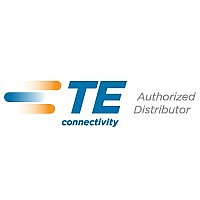TEST PROCEDURE
Specifications subject to change
Dimensions are for reference only.
Test Procedure
AGASTAT
E7014 and E7024 were tested in accordance with
the requirements of IEEE STD. 323-1974
(Standard for Qualifying Class 1E Equipment for
Nuclear Power Generating Stations), IEEE STD.
344-1975 (Seismic Qualification for Nuclear
Power Generating Stations) and referenced to
ANSI/EEE C37.98 (formerly IEEE Standard 501-
1978, Standard for Seismic Testing of Relays).
The relays were tested according to parameters
which, in practice, should encompass the
majority of applications. Documented data applies
to timing relays which were mounted on rigid test
fixtures. The following descriptions of the tests
performed are presented in their actual sequence.
Radiation Aging
Relays were subjected to a radiation dosage of
2.0 X 10
adverse plant operating requirements for such
areas as auxiliary and control buildings.
Cycling with Load Aging
The radiated units were then subjected to 27,500
operations at accelerated rate, with one set of
contacts loaded to 120VAC, 60Hz at 10 amps; or
125VDC at 1 amp, and the number of mechanical
operations exceeding those experienced in actual
service.
Temperature Aging
This test subjected the relays to a temperature of
100°C for 42 days, with performance measured
before and after thermal stress.
Seismic Aging
Sufficient interactions were performed at levels
less than the fragility levels of the devices in oder
to satisfy the seismic aging requirements of IEEE
STD 323-1974 and IEEE STD 344-1975.
Nuclear Qualified Time Delay Relays – Series E7000
5
®
Rads, which is considered to exceed
timing relay Models E7012, E7022,
The SRS shape (at 5 percent damping), is defined by four points:
SPECIMEN 1 & 3 (E7012 SERIES)
RELAY STATE: TRANSITIONAL MODE (TD X 2)
AXIS (H + V):
TEST RUN NO. 41, 45, 60, 63
COMPOSITE OF FB/V-, SS/V-, SS/V+, FB/V+ X .707
DUE TO 45° INCLINATION OF TEST MACHINE.
Figure 1. Response Spectrum, Transitional Mode
point A = 1.0 Hz and an acceleration equal to 25 percent of the Zero
point D = 4.0 Hz and 250 percent of the ZPA
point E = 16.0 Hz and 250 percent of the ZPA
point G = 33.0 Hz and a level equal to the ZPA
Period Acceleration
control components suitable for class 1E service
in nuclear power generating stations, AGASTAT
timing relays have been tested for three
applications. These E7000 Series
electropneumatic devices have demonstrated
compliance with the requirements of IEEE
Standards 323-1974 (Standard for Qualifying
Class 1E Equipment for Nuclear Power Generating
Stations) and IEEE Standard 344-1975 (Seismic
Qualifications for Nuclear Power Generating
SEISMIC AND RADIATION TESTED
In order to satisfy the growing need for electrical
Seismic Qualification
Artificially aged relays were subjected to simulated
seismic vibration, which verified the ability of the
individual device to perform its required function
before, during and/or following design basis
earthquakes. Relays were tested in the non-
operating, operating and transitional modes.
Hostile Environment
Since the timing relays are intended for use in
auxiliary and control buildings, and not in the
reactor containment areas, a hostile environment
test was performed in place of the Loss of
Coolant Accident (LOCA) test. Relays were
subjected to combination extreme temperature/
humidity plus under/over voltage testing to prove
their ability to function under adverse conditions
even after having undergone all the previous
aging simulation and seismic testing. The devices
were operated at minimum and maximum voltage
extremes: 85 and 120 percent of rated voltage for
AC units, and 80 and 120 percent of rated voltage
for DC units, with temperatures ranging from
40°F to 172°F at 95 percent relative humidity.
1
®
Stations). Testing was also referenced to
ANSI/IEEE C37.98 (formerly IEEE Standard 501-
1978, Standard for Seismic Testing of Relays).
over 40 years of continual field use in a wider
range of industrial applications. On-Delay, Off-
Delay and Four-Pole versions are available for
use with a choice of 23 coil voltages, as well as
time-calibrated delay adjustment to as long as
60 minutes.
Baseline Performance
In addition to aging tests, a series of baseline
tests were conducted before, and immediately
after each aging sequence, in the following areas:
Data was measured and recorded and used for
comparison throughout the qualification test
program in order to detect any degradation of
performance.
The present E7000 Series design has evolved
Pull-in Voltage
Drop-out Voltage
Dielectric Strength at 1650V 60Hz
Insulation Resistance
Operate Time (milliseconds)
Recycle Time (milliseconds)
Time Delay (seconds)
Repeatability (percent)
Contact Bounce
Contact Resistance
(milliseconds at 28VDC, 1 amp.)
(milliohms at 28VDC, 1 amp.)
Technical Support Center 1-800-522-6752
www.tycoelectronics.com
4/24/2002 Edition
Electronics



















